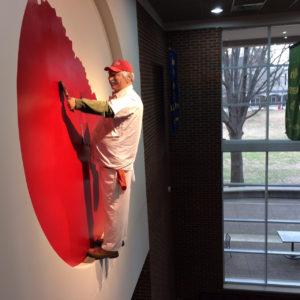Among the plethora of presentations at the SEJC convention, one that every journalist in this modern age should have attended was “Rethinking Journalism in the Age of Social Media.”
Austin Peay’s Rob Baron, Ph.D., a communication professor, focused on the ever-changing state of modern journalism, particularly focusing on social media’s role in that evolution.
“There’s a famous quote by John Culkin: ‘We shape our tools and then our tools shape us,’” Baron said. “That idea is that we create technologies, we use those technologies and then we in turn are changed by those technologies. It’s not like technology is some magic genie that forces us to do things. We’re always forced or pushed to do things by how the tools shape us.”

This quote was the thrust for the entire panel: Because journalists and their readers use social media, journalism must adapt the way they write, then market the news to how the consumer wants to receive it. Just as journalists in the past had to adapt their styles to radio or television, Baron said, today’s journalists must adapt to the new frontier called the Internet and the new technology called social media.
Citing data, Baron said that in 2013, 47 percent of Facebook and Twitter users used the social media sites to access their news; by 2015, the percentage jumped to 63 percent.
He added that 23 percent of Twitter users and 28 percent of Facebook users discuss the news on these platforms as well, and the need to adapt becomes apparent.
“No one really is just a print journalist anymore,” Baron said. “You have to be involved with audio, video, images, stuff like that. It’s all becoming this big blob of media.”
Some of the key points Baron outlined for becoming successful at using social media to promote journalism were that the “spreadability,” or availability, when the audience needs the information, must be considered along with portability, reusability and its relevance to multiple audiences. Also, the information must be a part of a steady stream of material to keep your audience engaged.
“I don’t know anyone who has given me or given anyone a reason for why things go viral,” said Baron. “If you think about your favorite viral media moments in the last year, I think there are lots of things that go viral, but no one can really explain why that’s the case.”
However, Baron pointed to the work of Henry Jenkins, Ph.D., Sam Ford and Joshua Greene, Ph.D., from their book, “Spreadable Media: Creating Value and Meaning in a Networked Culture,” as having a potential answer.
In their book, they hypothesize that a piece of medias’ viral nature may come from engaging in a shared fantasy, using parody and humor, activating “cultural production” in audiences, offering an air of mystery, engaging rumors that speak fears or desires and activating civil engagement.
However, Baron said, the most important thing journalists can do is to build themselves as a “brand” they can sell online.
“I think building a social media brand means finding a voice, being able to find out who you are in terms of a coherent identity,” Baron said, “finding like-minded allies that can help you spread your message and inhabiting social media communities.
“All of these different things get at a core question that every journalist or person who is creating content needs to be aware of, and that is the simple question of, ‘Who are you on social media?’ The more you can do to do those kind of things, that’s going to help you to be there.”
Baron closed by telling the audience that social media and the Internet are like floating down a massive river and you’re “along for the ride.”
“It doesn’t mean you’re out of control and you don’t have a role to play in it, but, like white-water rapids, social media is going to go the way it wants to go,” Baron stressed.
“I think the same can be said for those making content for social media,” Baron added. “You can’t direct where the river is going; all you can do it make sure your message stays in line and afloat. So your job as a professional is to ride the waves of social media and make sure you end up where you want to be and at a given moment you’re cognizant of how the river is flowing and how you can navigate that river as best you can.”
